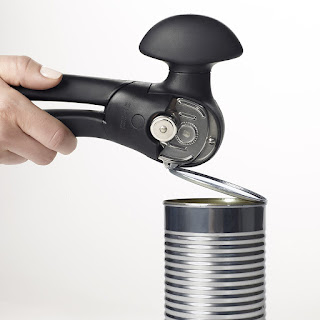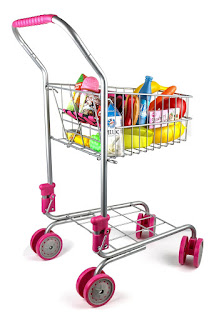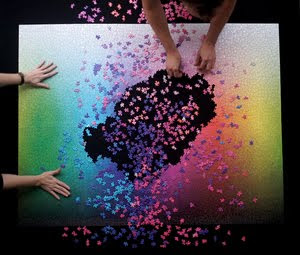There is a
cartoon by Cathy Thorne that describes my experience as the parent of a twice exceptional child, as a human, and especially as a part-time homeschooler. It says "I love routine. Until I'm bored, then I love excitement. Until I'm overwhelmed, then I love routine."
Sound familiar? This conundrum is the basis for my best tips for when homeschooling becomes a drag...or, really, when anything becomes a drag.
First, Find the Source
I have found that the first thing to do when things begin to drag is to figure out why exactly things are dragging. (Duh? I know. But sometimes I need the gentle reminder to figure out the reason behind difficult situations.) Once I know the answer to "WHY?" then I can formulate an effective plan for how to get us out of our funk. To this end, these are some questions to consider:
- For whom is it a drag? Me or them?
- Is it a drag because of routine or because of overstimulation?
Once you've answered those two questions you will be able to come up with a plan for how to proceed. Here is how it works for me.
Answer Combo #1: I'm Sick of the Routine
A few weeks ago I was completely depressed about the relentless post-dinner routine. Every evening at 5:30PM I feel myself change. EVERY. EVENING. AT 5:30PM.
Nevertheless, I ride the routine. Finish dinner. Clean kitchen. Clean dining room. "No, you may not do computer research after dinner." "Yes, you can take as many
piano lessons as you like." Bath time. Fold laundry. Brush teeth. Read books to kids. Sometimes there is yelling...by me, by them.
Until one day I just couldn't even ride the routine again. I didn't clean. I didn't parent bath time. I sent a text message to my husband and asked him to please come home earlier than his typical 7PM return. I asked the kids (ages 7 and 4) to leave me alone and I snuggled in my bed with a novel. When my husband got home, he did the whole shebang.
Tips for when you are dragging because of routine:
- Ask for help.
- Recharge.
- Know that it will change. If you are feeling down because of the routines of the work of life and the work of homeschooling then that's OK. It is human nature to have energy cycles. However normal it is, it is equally important that you don't get bogged down, or "diminished" to the point that you can't do your work.
Answer Combo #2: I'm Overstimulated
Every Sunday morning I go to
yoga. Then I do the grocery shopping for the week and return home in time for lunch. Every time I walk in the door I go from quiet alone time to loud together time. My husband is fiddling with something, the kids are squirrely from the transition, I'm showered in other people's energy.
A few months ago I realized that I was having a really hard time with Sunday afternoons because I was overstimulated. What I wanted was for us to have a relaxing Sunday afternoon together but that isn't really the family I have. "Relaxing" rarely describes our household. There is always bouncing, laughing, yelling, arguing, running, crying, playing, spinning... You get the idea.
So I started a new routine. On Sundays, after I have unloaded and put away the groceries, we have a family outing. We all leave the house. By moving our family's energy, I am able to reduce the stimuli, feel better, and parent better.
Tips for when you are dragging because you are overstimulated:
- Reduce the stimuli.
- Change the environment. (Turn off the background music, turn off the lights, clean the floor, etc.)
- Leave the environment. (Much easier than cleaning.)
Answer Combo #3: They are Sick of the Routine
Our routine weaves together the work of life and playful self-directed learning. So if I think my kids are dragging because they are sick of the routine, I wonder which part of the routine is failing.
Is it the meals and subsequent clean-up? Or is our learning contract somehow failing to meet our needs? Either way we are not bound hard-and-fast to stick it out if it isn't working. We change something about our routine.
Tips for when they are dragging because they are sick of the routine:
- Eat outside on the patio.
- Pack a picnic meal and eat at a playground, museum, or other out-of-the-home venue.
- Eat at a restaurant.
- Invite friends to enjoy a meal with you.
- Find a supplement to the self-directed learning routine.
- Buy a new toy, game, CD, or book.
- Go to a new exhibit at a museum or zoo.
- Volunteer at a new non-profit.
- Shelf the learning contract and go camping.
- Shelf the learning contract and do whatever they want. It is called having a "yes day."
Answer Combo #4: They are Overstimulated
The signs are easy to see. When my son is overstimulated he begins to stim, he begins to wander aimlessly and seemingly without being aware of his surroundings, and if his stimming or wandering is interrupted he explodes angrily. It happens in loud places, it happens in places that are not loud but are noisy, it happens even when it is quiet but there is a background din of quiet conversations. He can cope for a short amount of time but when he hits his limit, he REQUIRES attention and a change. These are the changes that work for us...
Tips for when they are dragging because they are overstimulated:
- Reduce the stimuli. (turn of noises, lights, and reduce clutter.)
- Change the environment. (Clean.)
- Leave the environment.
- Last but not least: Reconnect. This is the most important one for us and the favorite way of reconnecting is through story-telling. We define story-telling pretty broadly. Sometimes play board games, other times we build imaginary worlds out of blocks, magnetic tiles, and LEGO and lead mini-figures on an adventure, sometimes we simply pile on the couch and read.
The Panacea
The one thing that works without fail in every circumstance it to get outside. Sometimes we are dragging so deeply in the ground that it feels like a heroic parenting effort to get the children into the fresh air but it is worth it every time. Wait, that bears repeating:
it is worth it every time.
Tips for getting outside:
- Pack easy sustenance, fast. Fill water bottles half-way and shove a couple snack bars in your pocket.
- Help your children put on their socks, shoes, coats, and hats. Don't expect a heal-dragging threenager to do it herself.
- Go somewhere close. Find a playground, park, state park, or trail nearby. That way the drive in the car, which is often filled with bickering and whining, isn't unbearably long.
- Consider treasure-hunting (geocaching).
Those are my tips on how to cope when it is a drag (whatever "it" may be). I'd love to hear your approach to the routine/overwhelm paradox...
For more tips on what to do when homeschooling is a drag, surf over to the
GHF Blog Hop.

































